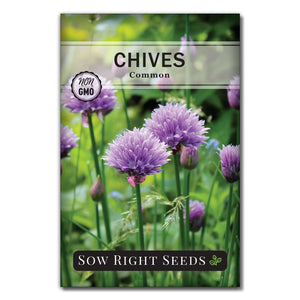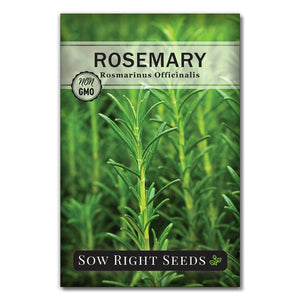How to Grow Mint and Make it the Easiest Plant in Your Garden
Herb growing tipsIf you want an easy-to-grow perennial that smells and tastes amazing, start growing mint. Mint is grown throughout the world, where it’s used in a variety of dishes and drinks. It will grow in most climates and can even be grown indoors. You can enjoy the sweet taste of mint with fresh garden peas or in a refreshing drink on a hot summer day. Follow these growing tips for beautiful, aromatic mint that will keep increasing year after year.

5 Reasons to Grow Mint
1. Culinary Delight
Mint's fresh, aromatic leaves add a burst of flavor to a wide range of dishes. Use mint in salads, sauces, infused water, and all kinds of drinks.
2. Medicinal Uses
Grow mint to make your own natural remedies. Mint has a long history of medicinal use. It is believed to aid digestion, alleviate headaches, soothe nausea, and provide relief from common cold symptoms.
3. Low Maintenance
Mint is known for its resilience and ability to thrive in a variety of conditions. It's a hardy perennial herb that requires minimal care. Even in cold climates, it grows back in the spring, making it an excellent choice for both novice and experienced gardeners.
4. Companion Plant
Mint's small, delicate flowers attract pollinators like bees and butterflies that play a vital role in pollinating other plants in the garden. The scent of mint can also help deter pests like mosquitoes, ants, and rodents.
5. Aesthetic Value
The lush, green foliage of mint plants adds aesthetic appeal to the outdoor landscape. The refreshing scent of mint is delightful and can be placed where you will brush up against it while walking through the garden. Mint is also ideal for fresh flower arrangements. Mint can last in a vase for over a week and even start growing roots.
How to Grow Mint from Seed
It’s simple to start growing mint from seed. You can start mint seeds indoors six weeks before transplanting or 8 to 10 weeks before the last spring frost. Having adequate heat and light will result in mint plants that can be harvested in as little as two months.

Tips for fail-proof mint seed germination
Sow mint seeds in damp seed starting mix.
Gently press the seeds into the soil or lightly sprinkle soil on top to a depth of 1/8".
A heating mat can be used to keep the soil warm. A temperature of 70º to 80ºF is optimal for mint seed germination.
Keep the soil moist until the seeds germinate in 10 to 15 days.
Position a grow light a few inches above the seedlings to give them adequate light.
Once the seedlings have two true leaves, water from the bottom to encourage root growth and prevent damping off.
Transplanting Mint Seedlings
Once all danger of frost is past, mint can be transplanted outdoors. Seedlings should be several inches tall with more than two true leaves. Take time to harden off mint seedlings before transplanting.
Space mint plants 8” apart. Different varieties of mint can cross-pollinate, so keep them far apart if you want to keep your variety pure.

How to Grow Mint Plants
Choosing the right location will make your mint plants a happy addition to your landscape. Mint can spread vigorously and must be confined if you don’t want it to take over your garden.
Soil
Moist, nutrient-rich soil that drains well will be optimal for growing mint.
Sun
Mint can tolerate full sun but prefers partial shade. Choose a location with some shade in the afternoon to keep it cooler in the hot sun.
Water
Mint prefers consistent watering. The use of mulch can help retain water in dry climates. More frequent watering may be needed in the hottest part of summer.
Pruning
Mint is a vigorous grower. Pruning and harvesting often will keep it bushier. Cut about an inch from the ground above a leaf node to encourage branching. After a few years, the roots can become too compacted, especially in containers. At this point, you may notice that the mint plant isn’t sending out as many new shoots. Divide the roots in the fall and replant them for healthy new growth.

How to Keep Mint from Spreading
Keeping mint confined is an important part of enjoying it in your garden. Mint will take up whatever space you give it. It grows prolifically by spreading with rhizomes. This underground root system can spread quickly and overtake other garden plants.
You need to control the rhizomes to keep your mint plants from spreading. Growing mint in containers and placing them strategically in your garden landscape is one way to do this effectively. Another way to confine mint is to put barriers in the ground. A bucket with the bottom removed and placed in the ground is one way to create a barrier. Keep a few inches above the ground to keep rhizomes from spreading over the top. Underground barriers that keep mint from spreading need to be 18 to 24 inches deep.

Harvesting Mint
Mint can be harvested at any time during the growing season. The flavor is most intense right before it flowers. The youngest leaves on the new growth will have the most intense flavor.
Harvest mint in the morning for the freshest leaves and best flavor. Use sharp shears to cut new sprigs above a leaf node. New leaves will be growing in two or three weeks.

Mint Growing FAQs
Does mint spread?
Mint loves to spread and will take up whatever space you give it. Grow mint in a container or enclosed space to keep it from spreading throughout your garden.
Can you dry mint?
Mint has the most flavor when it’s fresh, but it can also be dried to preserve it for later use. Cut stalks of mint and tie them in small bundles to hang upside down. Keep in a warm, dry space with plenty of airflow. It will take 2 or 3 weeks for the mint stalks to fully dry. Store dried mint in an airtight container away from heat and light.
How do you make mint tea?
Mint tea is a refreshing way to enjoy fresh mint leaves. Harvest young mint leaves for the most intense flavor. Pour boiling water over 2-3 tablespoons of leaves and steep them for 5 minutes. Enjoy mint tea warm, or let it cool before drinking.
Can you grow mint indoors?
Mint can be grown indoors. Since mint is often grown in containers, you can easily bring it indoors. Even though mint grows well in partial shade, it does need sufficient light. Mint plants grown indoors can become leggy without enough bright light; supplemental light is sometimes necessary. Mint needs to be grown in its own pot so it doesn’t crowd out other herbs. Keep the soil moist but not too wet.
If you’ve been waiting to add mint to your garden, now’s the time. Mint can be a beautiful part of your overall landscape design as well as a culinary herb. Its versatility and usefulness make it a welcome addition to your garden. Once you control the growth of mint to keep it where you want it, you’ll be rewarded with years of refreshing flavor.
Written by Beverly Laudie
If you found this information helpful, share it with your gardening friends!







Leave a comment